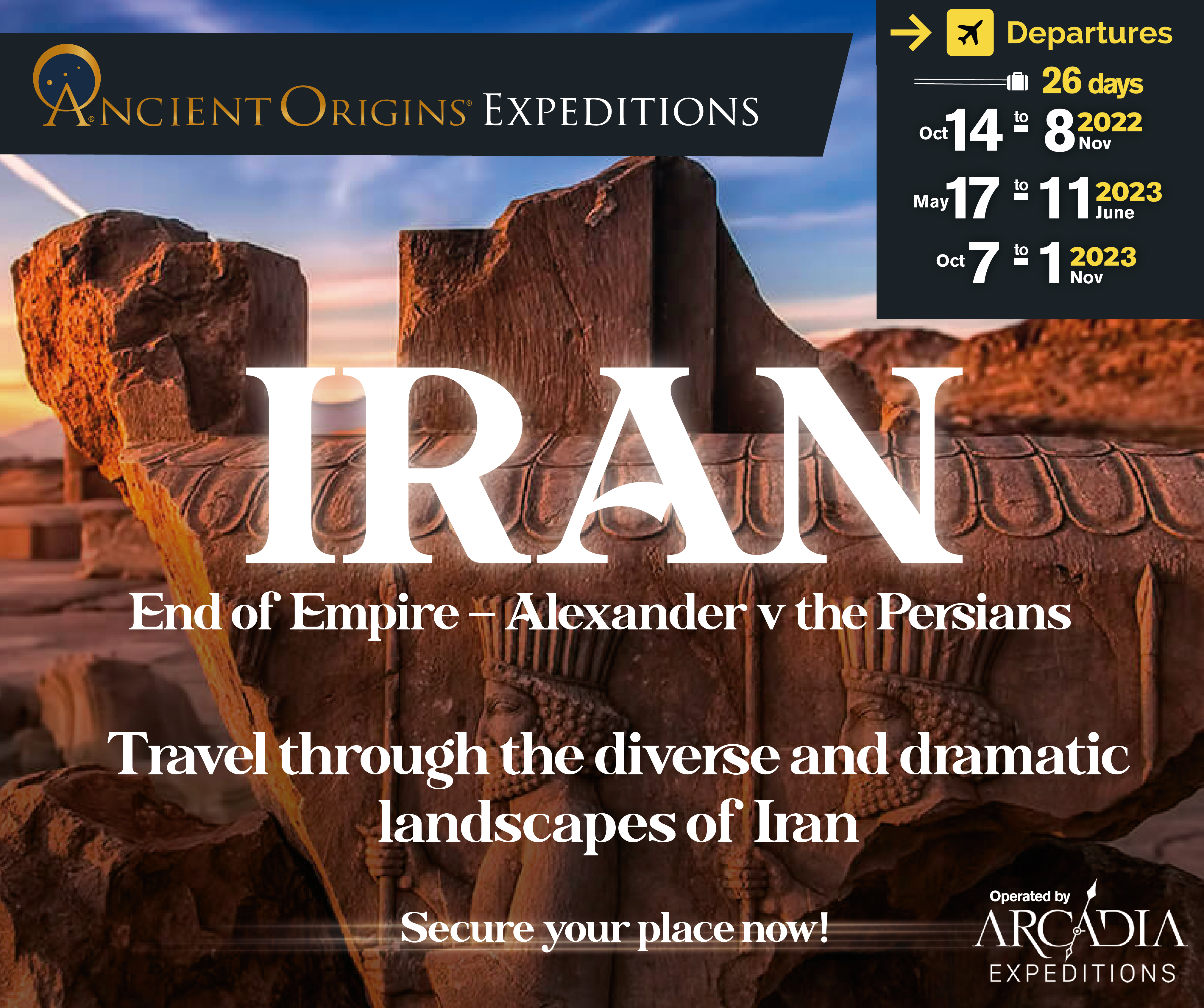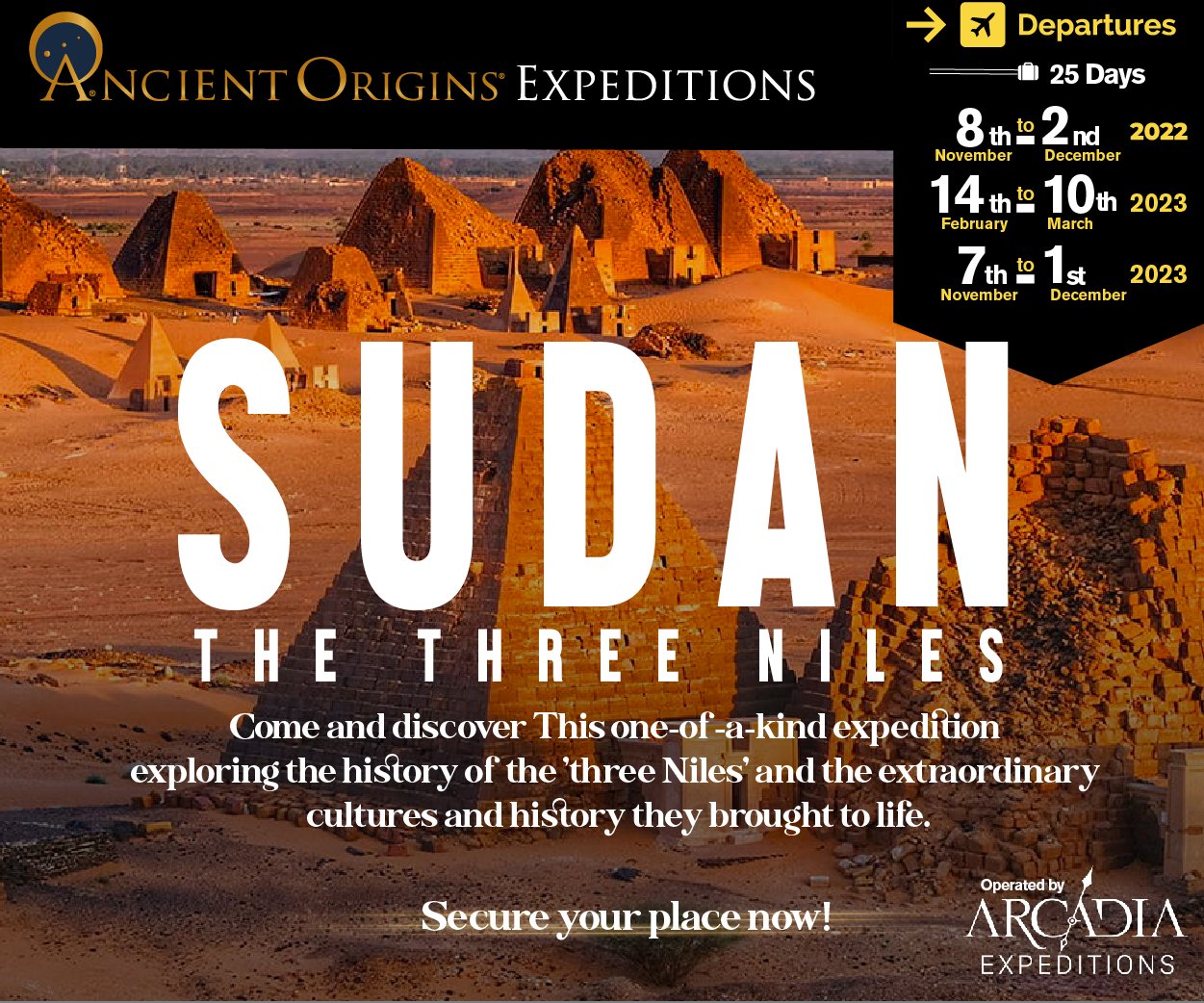







![]()
Archaeologists have uncovered a spectacular discovery in Dongola, Sudan – a series of hidden rooms beneath a medieval monastery featuring stunning Christian art unlike anything seen before in Nubian history . From depictions of the Virgin Mary and Jesus to a Nubian king, the artwork is both dynamic and intimate, a rarity for the typically hieratic style of Nubian art.
Archaeologists from the Centre of Mediterranean Archaeology, University of Warsaw, have been conducting a research project called “UMMA – Urban Metamorphosis of the community of a Medieval African capital city”, according to a press release .
An archaeologist working in one of the hidden rooms. ( Magdalena Skarzynska / Polish Center of Mediterranean Archaeology, University of Warsaw )
This discovery was made at the Old Dongola medieval monastery located on the banks of the Nile, more than 500 km north of Khartoum. The Polish mission, which was exploring houses dating from the Funj period (16th-19th century AD), unearthed a second, well-preserved church with vivid mural paintings and inscriptions in Greek and Old Nubian .
The location of the complex of rooms, adjacent to the Great Church of Jesus, entertains the possibility that it was a royal commemorative complex, or a crypt for a significant figure. The nature of the discovery, in such a confined space and with such a significant height, suggest it was not a simple domestic dwelling, but a structure with a particular function and purpose.
“The room in which the painting with the image of King David is located resembles a crypt, but is 7 meters above the medieval ground level. The building is adjacent to the monumental religious building identified by researchers as the Great Church of Jesus mentioned in the texts. He was probably the cathedral of Dongola and the most important church of the kingdom of Makuria”, write the authors of the discovery.
The most exciting discovery, however, was made when the team found an opening leading to a small chamber beneath the floor of one of the houses. The chamber’s walls were decorated with unique representations, depicting the Virgin Mary, Christ, and a scene with a Nubian king, Christ, and Archangel Michael.
The king bows and kisses the hand of Christ, who is seated in the clouds, and is aided by Archangel Michael, whose spread wings protect both the king and Christ. Such a scene has no parallels in Nubian painting, just like the figure of the Virgin Mary, who’s dressed in dark robes and is striking a dignified pose. She is shown having a cross and a book in her hands. On the opposite wall is Christ, with his right hand in a blessing gesture, and his left hand holding a book, partially preserved.

Depiction of the Virgin Mary (Magdalena Skarzynska / Polish Center of Mediterranean Archaeology, University of Warsaw )
Old Dongola, also known as Tungul in Old Nubian, was the capital of Makuria, which was one of the most significant medieval African states. It had converted to Christianity by the end of the sixth century. However, Egypt was conquered by Islamic armies in the seventh century. An Arab army invaded in 651 but was repulsed, and the Baqt Treaty was signed, establishing relative peace between the two sides that lasted until the 13th century, reports PAP.
“It’s probably about Dongola, and the scene is just depicting King David. He was one of the last rulers of Christian Makuria, whose reign marks the beginning of the end of the kingdom. For reasons unknown today, King David attacked Egypt, which as part of retaliation invaded Nubia and was captured for the first time in its history. Perhaps the painting was created when the Mamluk army was approaching the city or was besieging it”, explain the CAŚ archaeologists. 
Scene with King David ( Adrian Chlebowski/Polish Centre of Mediterranean Archaeology University of Warsaw )
Dr. Agata Deptua of PCMA UW is currently studying the inscriptions that accompany the paintings. A preliminary reading of the Greek inscriptions revealed that they were texts from the Liturgy of the Pre-sanctified Gifts. The main scene is accompanied by an inscription in Old Nubian that is extremely difficult to decipher. The researchers learned from a preliminary reading by Dr. Vincent van Gerven Oei that it contains several references to a king named David as well as a prayer to God for protection of the city, reports Heritage Daily .
The city mentioned in the inscription is most likely Dongola, and the royal figure depicted in the scene is most likely King David. David was one of Christian Makuria’s last rulers, and his reign signaled the beginning of the kingdom’s demise. For unknown reasons, King David attacked Egypt, which retaliated by invading Nubia, resulting in Dongola being sacked for the first time in its history. The researchers think that the painting may have been made while the Mamluk army was approaching or the city was under siege.
Top image: Christian images found in one of the hidden rooms in Sudan. ( Dawid Szymański/Polish Centre of Mediterranean Archaeology University of Warsaw )
By Sahir Pandey
Altuntas, L. 2023. Archaeologists discovered an enigmatic complex of rooms, interiors of which covered with figural scenes unique to Christian art . Available at: https://arkeonews.net/archaeologists-discovered-an-enigmatic-complex-of-rooms-interiors-of-which-covered-with-figural-scenes-unique-to-christian-art/.
Milligan, M. 2023. ARCHAEOLOGISTS UNCOVER ORNATE CHRISTIAN FRESCOS IN OLD DONGOLA . Available at: https://www.heritagedaily.com/2023/04/archaeologists-uncover-ornate-christian-frescos-in-old-dongola/146809.
PAP. 2023. Unusual paintings discovered by archaeologists in Old Dongola . Available at: https://naukawpolsce.pl/aktualnosci/news%2C96040%2Cnietypowe-malowidla-odkryte-przez-archeologow-w-starej-dongoli.html.
They could be A LOT MORE ACCURATE if they said they were NOT sure who or what the art represented. But it’s a good example of going way out on a limb to make a find fit a narrative, rather dubiously. Great, however, that the find makes it into the public feed before some ‘authorities’, like Hawass and cabal, swoop in and do their touch-up/cover-up work.
Nobody gets paid to tell the truth.
I am a graduate of History from the University of Delhi, and a graduate of Law, from Jindal University, Sonepat. During my study of history, I developed a great interest in post-colonial studies, with a focus on Latin America. I… Read More










Ancient Origins has been quoted by:
At Ancient Origins, we believe that one of the most important fields of knowledge we can pursue as human beings is our beginnings. And while some people may seem content with the story as it stands, our view is that there exist countless mysteries, scientific anomalies and surprising artifacts that have yet to be discovered and explained.
The goal of Ancient Origins is to highlight recent archaeological discoveries, peer-reviewed academic research and evidence, as well as offering alternative viewpoints and explanations of science, archaeology, mythology, religion and history around the globe.
We’re the only Pop Archaeology site combining scientific research with out-of-the-box perspectives.
By bringing together top experts and authors, this archaeology website explores lost civilizations, examines sacred writings, tours ancient places, investigates ancient discoveries and questions mysterious happenings. Our open community is dedicated to digging into the origins of our species on planet earth, and question wherever the discoveries might take us. We seek to retell the story of our beginnings.
Ancient Origins © 2013 – 2023
Disclaimer – Terms of Publication – Privacy Policy & Cookies – Advertising Policy – Submissions – We Give Back – Contact us